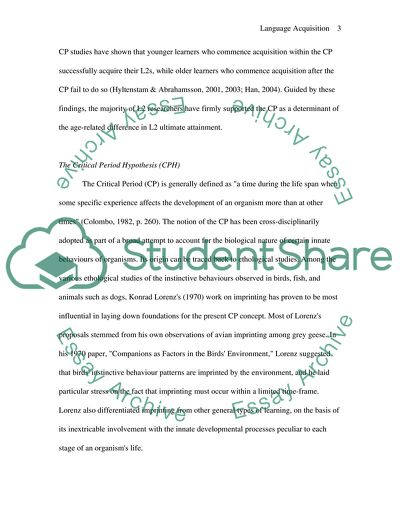Cite this document
(Critical Stage of Language Acquisition Assignment, n.d.)
Critical Stage of Language Acquisition Assignment. Retrieved from https://studentshare.org/education/1755830-a-critical-examination-of-the-concept-critical-stage-of-language-acquisition
Critical Stage of Language Acquisition Assignment. Retrieved from https://studentshare.org/education/1755830-a-critical-examination-of-the-concept-critical-stage-of-language-acquisition
(Critical Stage of Language Acquisition Assignment)
Critical Stage of Language Acquisition Assignment. https://studentshare.org/education/1755830-a-critical-examination-of-the-concept-critical-stage-of-language-acquisition.
Critical Stage of Language Acquisition Assignment. https://studentshare.org/education/1755830-a-critical-examination-of-the-concept-critical-stage-of-language-acquisition.
“Critical Stage of Language Acquisition Assignment”, n.d. https://studentshare.org/education/1755830-a-critical-examination-of-the-concept-critical-stage-of-language-acquisition.


